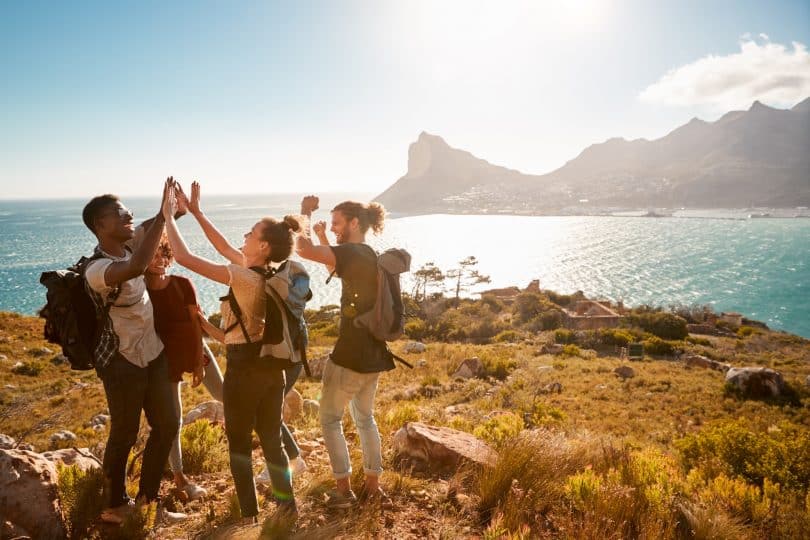Hiking is a great way to get out and get a breath of fresh air. Especially if your line of work is almost 100% indoors, things can get a little stifling. (Even more so if you work from home—I have to force myself to get out for at least a walk from time to time!)
If you’ve never hiked a trail before, we’ll talk about a good hiking gear list for beginners as well as some resources you can check out to find trails near you. One of the most important things is to know the trail you’re taking, so bring a friend who knows it or take a look at a map beforehand. Don’t do what I did the first time and take the “short way” up, which can often turn into an area that you should probably have extra climbing gear for.
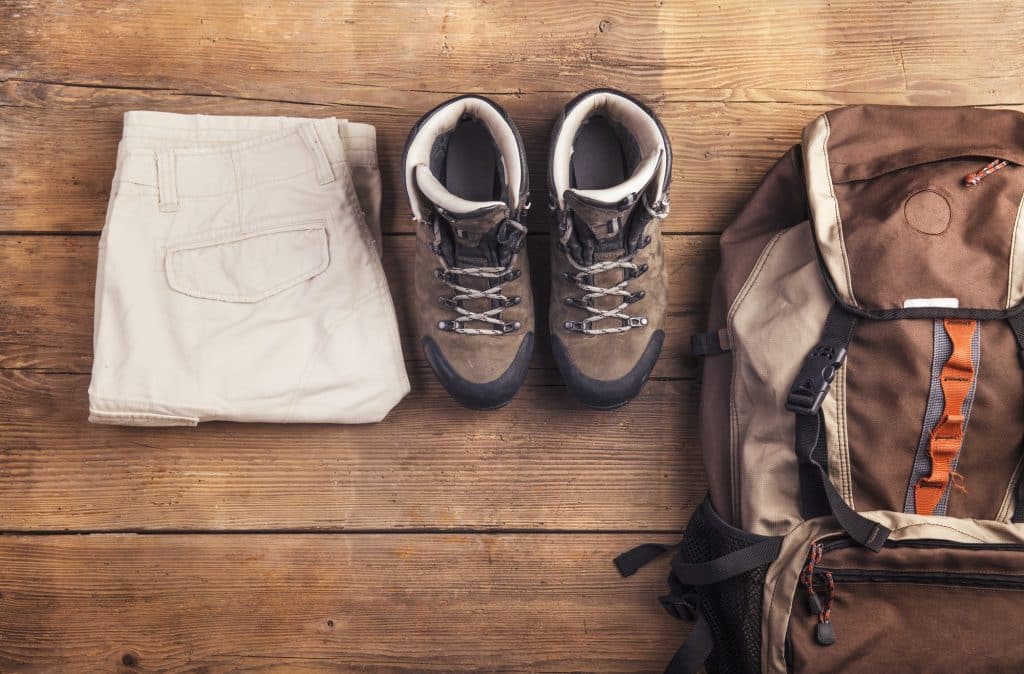
How to Prepare for Your First Hike + Hiking Gear List
Before you go hiking, there are a few things you’ll want to do—find a trail, find a friend, and make sure you have everything from your hiking gear list.
Where to Find Trails
I highly recommend checking out the Hiking Project site, where you can find trails in your area. They also have a really nice app that allows you to access trail maps whether you have service or not—it’s designed to work offline. (I still recommend having something on paper just in case anything happens to your phone!)
Gaia GPS is another excellent resource for finding new places to visit and has maps for hiking, camping, and hunting.
Find a Friend
Even if it sounds like an easy hike, if you’re not familiar with the area and are new to hiking, you’ll want to bring a friend. If they’re more experienced, they’ll probably have some extra gear and will be able to show you the area.
If you don’t have any friends that take an interest in hiking, you can usually find local groups. Sites like Meetup have a good selection of local groups with common interests. While I didn’t find a hiking group in my area, I did find a photography club that occasionally hits the trail to get some photos of the area. If you live in a small town that doesn’t have a lot of organized activities, you can always post on Meetup or on social media to see if anyone else would be interested!
Find Some Gear
A lot of things you’ll already have on hand. In the event that you don’t, I’ll include some links to products you can check out on Amazon and have them delivered right to your door. You’ll want to have:
- Navigation
- First Aid
- Headlamp or Flashlight
- Sun Protection
- Rain Cover and Waterproof Jacket
- Weather-Appropriate Clothes (+Extras!)
- Proper Footwear
- Food and Water
- Pocketknife
- Backpack
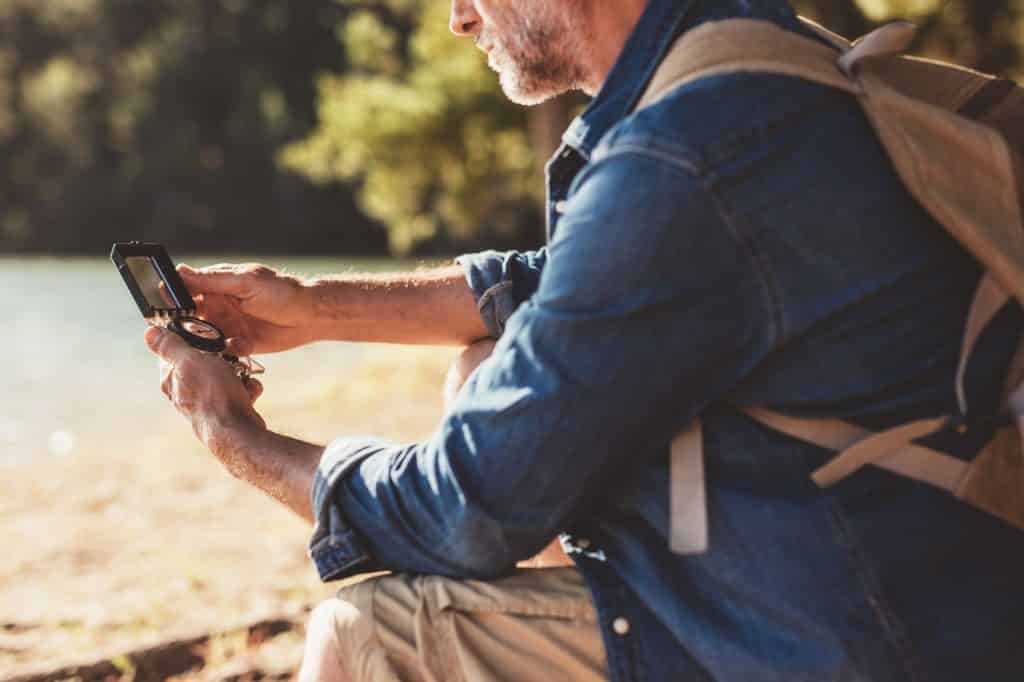
Navigation
Even on the simplest of hikes, you’ll want to make a habit of mapping your route beforehand and bringing a map, compass, and GPS (most smartphones will work for the GPS requirement).
While there are apps that can take the place of your map and compass, I recommend keeping a normal one on hand. While there are apps (like the ones mentioned above) that keep maps offline, compass apps are unreliable. And unless you’re absolutely certain your phone won’t break or your battery won’t die, you want a physical map. You’ll also want to make sure your phone is well-protected if you decide to use it!
First Aid
I spent a while trying to convince my co-worker he would inevitably need a first aid kit. I eventually convinced him by saying something along the lines of “if not for you, then for someone else.” He wound up needing it for a fall that very same month. First aid kits should include plenty of alcohol wipes, bandaids, gauze, and anything else you might need to clean up injuries while you’re out.
Headlamp or Flashlight
While you usually won’t need these, they’re never a bad idea to have, especially if you wind up staying out later than expected or decide to venture into darker places. Headlamps are especially useful if you’re hiking through caves so you can keep your hands free. Don’t forget to keep extra batteries on hand if you find yourself using it regularly!
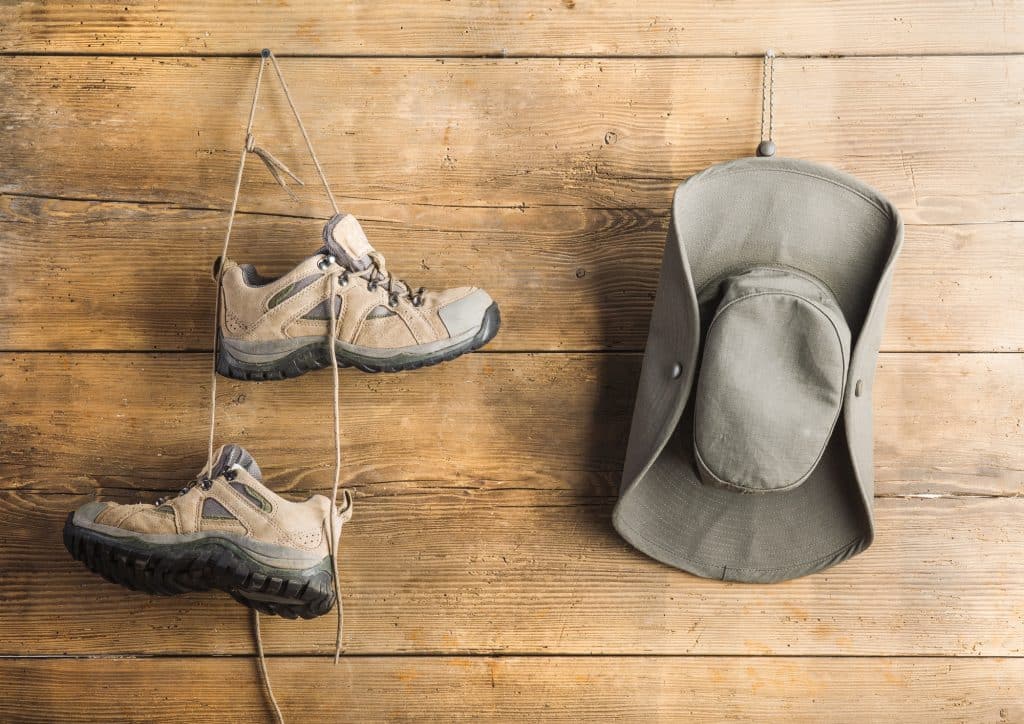
Sun Protection
Regardless of what time of year it is and what the cloud cover looks like, always wear sunscreen and bring a sun hat! You can get sunburned easily enough, even in overcast weather. Bring sunscreen, a hat that shades your face and neck well, and your favorite pair of shades.
Weather-Appropriate Clothes and Rain Covers
If you’re hiking in rainy weather (or even weather with a chance of rain), you’ll want to protect your pack and stay dry. There are convenient pack covers that keep everything dry, as well as lightweight, water-resistant clothing so you can stay dry without bogging yourself down with too many layers.
Of course, you’ll want to dress appropriately year-round—lots of layers in cold weather and lighter, breathable materials in warm weather ensure you can stay comfortable.
Proper Footwear
You’ll be on your feet pretty much the entire time, so your shoes will be your best friends. While your feet will still be sore at the end of the day, you won’t have to deal with a lot of the long-term issues that go along with being on your feet a lot in shoes that don’t have good support.
Food and Water
If you’re going off the trail for a while and don’t have concessions near your site, you’ll want to bring a day’s worth of food and then a little extra. These multi-compartment lunch containers are excellent for keeping meals, snacks, and dipping sauces. You’ll also want plenty of water—keep a few water packs on you at all times and stay hydrated.
Pocket Knife
Pocket knives or multi knives are essential in any hikers kit, preferably something with a partially serrated edge. And while you might think you’ll never use it, you’ll find you have to cut cables and ties a lot more frequently than you’d think. I’ve never had to use them on day hiking trips, but the longer you’re out, the more uses you’ll find.
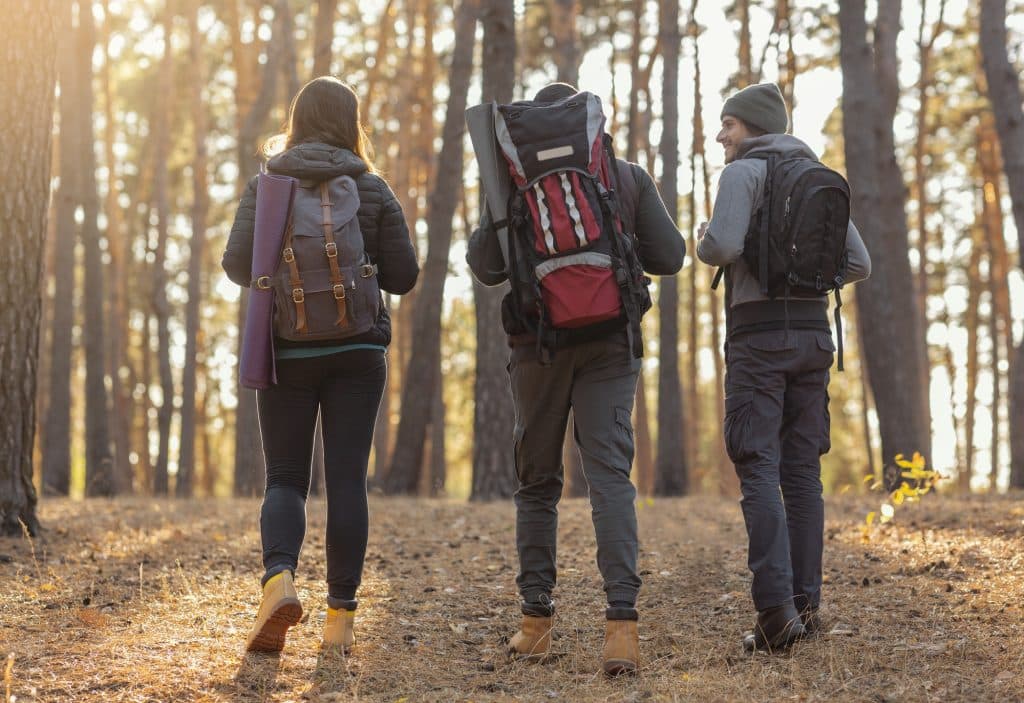
Backpack
For the most part, you’ll only need a small backpack for shorter day trips. I’ve included a couple of backpacks below—one for shorter trips and another for extended hikes where you may not stop for a while.
Look for durable, water-resistant packs (or ones that come with covers) and comfortable padded straps. You’ll be spending quite a bit of time with it, so you won’t want it digging into your shoulders.
This concludes our hiking gear list for what to bring on your first hike. If you’re looking for more outdoor activities and hobbies? Check out our bird watching guide for something you can do from home. Perfect for when you find yourself wanting to bring the local wildlife to your own backyard!

